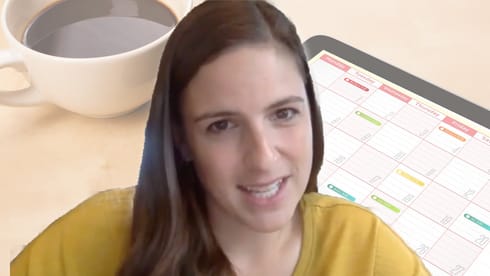On Driving Your Curriculum
As a homeschool grad myself, my first “real” classroom experience was college. This was interesting, because it meant I was old enough to be aware of what was going on and it was strange enough (to me) that I was curious.

As a previously homeschooled college student, I overheard and took part in many conversations about how homeschooling and private schooling stack up, where each fell short of our high 20-something ideals, and why one might choose one or the other. These conversations plus the new experience of listening to lectures and taking tests led me to pay attention to how teachers teach a classroom. “What is classroom teaching and learning?” I wanted to know.
One thing I definitely noticed in every single class I took all four years was that no teacher ever taught the entire textbook. I definitely noticed it, because each textbook bit significantly into my funds, and I resented it. Some teachers, in fact, didn’t teach anything from the class text, but either went on their own personal rambles or simply knew the material so well they riffed on the topics they wanted to and we covered the material well enough that way. All teachers (especially literature professors – I was an English major), skipped around the Norton Anthology and mostly taught their favorites that fit in the course description.
From this, I concluded that to be a teacher is to choose what you want to teach from the available resources and make of it what you will. A teacher’s job, I noted, was to have some thesis statement of a course description, and meet that purpose in the way they saw fit. Every teacher had his own style, his own types of tests, his own way of working around a book. Every teacher had his own agenda. Every teacher did what pleased him within the bounds (mostly) of the course description (which I think they wrote) and not within the bounds of the textbook’s table of contents.
Maybe it’s not the same in elementary schools. I don’t know. However, a couple years ago, when I was looking into Veritas Press’ Omnibus program (an overwhelming curriculum if ever there was one!), I read this review by one of the contributing authors:
Good teachers will pick and choose lessons, chapters, texts throughout the Omnibus series. The textbooks are just big piles of suggestions and ideas, and they need to be applied with wisdom to every classroom, every family, and every student.
The material is given to you, the teacher, to pick and choose and apply as fits your situation. Don’t ever feel like you’re doing it wrong if you don’t finish a book in a year.
School teachers don’t, either. Meeting their objectives does not necessarily mean doing every page in the book.
Why can’t we homeschool mothers allow ourselves to the same freedom? Why can we also not use textbooks as a tool to meet the course description we set out to accomplish? Why do we so often feel that our job is to serve up a textbook’s agenda rather than to set our own agenda?
It’s because freedom is scary. It’s not safe. There are no guarantees. But, you know what? The textbook doesn’t come with any, either.
One of the dictionary definitions of freedom is “absence of subjection to foreign domination or despotic government.” This, I think, is the freedom we need to strive for. Instead, however, we choose to place ourselves in subjection and slavery under despotism. I’m not talking about the state or federal government, but about the rules and suggestions given by the materials we use in our home schools.
You are the mother. You are the teacher. You might not know the subject as well as the author of the material, but you do know your child much better. You are not teaching a generic classroom of averages, but your own house of individuals. Your job isn’t to pull them through the gauntlet laid out by the curriculum, but to determine your curriculum – the path you take – and use the materials as means to get there, always being the one in the driver’s seat.
As we drive our course, we can use cruise control. We can follow the suggestions laid out for us if they seem like they will serve. But if cruise control and autopilot take a turn for the worst and you start off-roading in a little Toyota, you don’t need to keep holding on for dear life hoping for the best. You can slam the breaks, you can choose a different vehicle, you can even start walking. Better to be on the right road going slowly than fly like a speeding bullet off your chosen path. Direction matters more than vehicle and more than speed.


